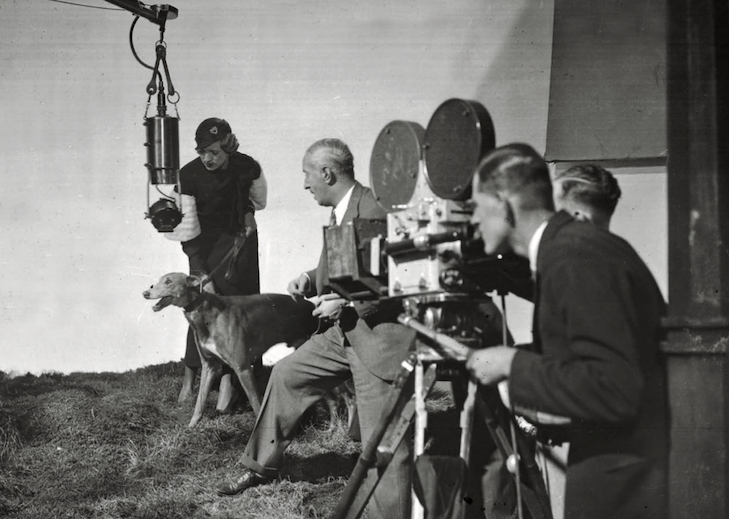
“Dog’s Best Friend: The Story of an Unbreakable Bond,” by Simon Garfield
Talk about timing for a book release! Has there ever been a period in your lifetime when you felt more connected to your dog?
COVID-19 has altered our lifestyle this year with work and study at home nonstop, which means we all need a break. Having a four-legged friend alongside is the perfect psychological ballast, whether it’s a walk or just some old-fashioned, hands-on therapy.
The author’s own Velcro companion, Ludo, a 12½-year-old Labrador Retriever, is not a special dog, says the author, but “is a unique animal to me and the rest of his human family,” for which they “would do almost anything to ensure his continued happiness.”
Celebrating The Beauty of Dogs

Ludo quickly emerges as the guidepost for this pragmatic – and colorful – travelogue across dogdom’s worldwide turf from the comics and cinema to research laboratories, the literary world, and even into space.
In the Introduction, Garfield acknowledges, “I am finishing this book during the virus-haunted days of April 2020, and Ludo is the only presence in our house not looking anxious.”
Garfield delivers bigtime on his intent that this penetrating overlook reflects a celebration of dogs’ intelligence, curiosity, beauty, and loyalty and their cultural journey from historical working companion to today’s bed mate.
In the process, the British author’s delivery is witty, probing, and spot-on. Take, for instance, this characterization: “The behavioral traits that humans value most highly in dogs today may be summarized in a few rather unscientific words – friendliness, compatibility, usefulness – and one equally unscientific action, the disarming offering of a paw.”
Dogs and Their Owners
The versatility and heart of man’s best friend is front and center from a chapter entitled “What Darwin Didn’t Know About Dogs (Was Hardly Worth Knowing)” to “Born a Dog, Died a Gentleman.”
And don’t forget the psyche of our four-legged mates, either, Garfield notes, whether it’s an experiment to detect how and why dogs look guilty; an investigation into the effect of different genres of popular music on the stress levels of dogs in kennels; or what drives a service dog.
Susan Close, an English 70-something dog trainer who has seen a wide array of owners over decades, “believes that our changing relationship with dogs has been affected by our changing relationship with each other. People are more selfish now than they were, she reasons, which means some people expect puppies to arrive fully house-trained,” Garfield writes.
“She maintains that her objective isn’t just a well-trained dog but a well-behaved dog, a dog that will make judgments based on a wider understanding of its role and purpose.
“You want to make me mad?” she says. “Refer to your dog as a fur baby.”

The Craze of Dog Trends
Designer dogs get plenty of attention, too, in this interspecies introspective. The craze began in the early 1980s when an Australian, Wally Conron, received a request to provide a vision-impaired woman in Hawaii with a guide dog, but one her partner, who was allergic to pet hair, could live with.
His first thought was a Standard Poodle, which turned out to be a bust. Next step was crossing a male Poodle with a Labrador Retriever. And voila, an offspring turned out to be nothing to sneeze at for the Hawaiian woman’s partner – and the designer-dog revolution was sprung. You know what has happened since.
Years later, Garfield notes Conron lamented to The Associated Press, “I’ve done so much harm to pure breeding and made so many charlatans quite rich. I wonder, in my retirement, whether we bred a designer dog or a disaster. Instead of breeding out the problems, they’re breeding them in. For every perfect one, you’re going to find a lot of crazy ones.”

Dogs in Media
Since, 1576, dogs have long been a popular centerpiece in the literary world, and here Garfield explores some of his favorites. “Most remarkable” on his list is the “ripping, snarling, allegorical and bestselling ‘The Call of the Wild (1903)’ by Jack London.”
When it comes to man’s relationship with the dog, no character more transcends that intense bond than Charles Schulz’s Snoopy, who made his debut in a “Peanuts” strip in October 1950 and is still working his magic with readers and online viewers today.
Garfield writes, “People who bought newspapers expected a pleasurable and meaningful beginning to their morning, Schulz believed. He hoped that the sight of a little dog bouncing along would do the trick, and he was right. ‘Just thinking about a friend makes you want to do a happy dance,’ he noted, ‘because a friend is someone who loves you in spite of your faults.’ “
Conversely, later in the same chapter, “The Art of the Floofiest,” respected canine behaviorist Alexandra Horowitz says, “Social media and the entertainment industries have made dogs into ‘furry emoji,’ a short-hand replacement for emotion and sentiment. The act robs the dog of dignity. Each representation diminishes this complex, impressive creature to an object of our most banal imagination . . . it is degrading to the species.”
Yet Garfield argues that in some ways the future of our dogs is online, where we can readily communicate with others, whether it’s a veterinary health-care question or finding a reputable breeder while exploring with caution.
With emotional acuity, “Dog’s Best Friend” leaves the reader acknowledging that Canis lupus familiaris will always be a mixed bag of ancestry and characters while maintaining an unflinching connection with us.
“Dog’s Best Friend: The Story of an Unbreakable Bond,” by Simon Garfield. William Morrow. $26.99.

